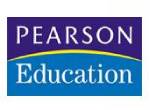Post Graduate Certification in Patient Safety
( PGCPS )
❖ Accident/error/Injury prevention
Learning Objectives
At the end of this course, the learner will be able to
1. Assess client for allergies and intervene as needed (e.g., food, latex, environmental allergies)
2. Determine client/staff member knowledge of safety procedures
3. Identify factors that influence accident/injury prevention (e.g., age, developmental stage, lifestyle, mental status)
4. Identify deficits that may impede client safety (e.g., visual, hearing, sensory/perceptual)
5. Identify and verify prescriptions for treatments that may contribute to an accident or injury (does not include medication)
6. Identify and facilitate the correct use of infant and child car seats
7. Provide client with appropriate method to signal staff members
8. Protect client from injury (e.g., falls, electrical hazards)
9. Review necessary modifications with a client to reduce stress on a specific muscle or skeletal group (e.g., frequent changing of position, routine stretching of the shoulders, neck, arms, hands, fingers)
10. Implement seizure precautions for at-risk clients
11. Make appropriate room assignments for cognitively impaired clients
12. Ensure proper identification of client when providing care
13. Verify appropriateness and accuracy of a treatment order
❖ Emergency Response Plan
Learning Objectives
At the end of this course, the learner will be able to
1. Determine which client(s) to recommend for discharge in a disaster situation
2. Identify nursing roles in disaster planning
3. Use clinical decision-making/critical thinking for emergency response plan
4. Participate in emergency response plans (e.g., internal/external disaster, bomb threat, community planning)
5. Participate in disaster planning activities/drills
❖ Ergonomic Principles
Learning Objectives
At the end of this course, the learner will be able to
1. Assess client ability to balance, transfer and use assistive devices before planning care (e.g., crutches, walker)
2. Provide instruction and information to the client about body positions that eliminate the potential for repetitive stress injuries
3. Use ergonomic principles when providing care (e.g., safe client handling, proper lifting)
❖ Handling Hazardous and Infectious Materials
Learning Objectives
At the end of this course, the learner will be able to:
1. Identify biohazardous, flammable, and infectious materials
2. Follow procedures for handling biohazardous and hazardous materials
3. Demonstrate safe handling techniques to staff and client
4. Ensure safe implementation of internal radiation therapy
❖ Home safety
Learning Objectives
At the end of this course, the learner will be able to:
1. Assess need for client home modifications (e.g., lighting, handrails, kitchen safety)
2. Apply knowledge of client pathophysiology to home safety interventions
3. Educate client on safety issues
4. Encourage the client to use protective equipment when using devices that can cause injury
5. Evaluate client care environment for fire/environmental hazard
❖ Reporting of Incident/Event/Irregular Occurrences/Variance
Learning Objectives
At the end of this course, the learner will be able to:
1. Identify need/situation where reporting of incident/event/irregular occurrence/variance is appropriate
2. Acknowledge and document practice errors and near misses (e.g., incident report for medication error)
3. Evaluate response to error/event/occurrence
4. Report unsafe practice of health care personnel and intervene as appropriate (e.g., substance abuse, improper care, staffing practices)
❖ Safe Use of Equipment
Learning Objectives
At the end of this course, the learner will be able to
1. Inspect equipment for safety hazards (e.g., frayed electrical cords, loose/missing parts)
2. Teach client about the safe use of equipment needed for health care
3. Facilitate appropriate and safe use of equipment
4. Remove malfunctioning equipment from the client care area and report the problem to appropriate personnel
❖ Security Plan
Learning Objectives
At the end of this course, the learner will be able to
1. Use clinical decision making/critical thinking in situations related to security planning
2. Apply principles of triage and evacuation procedures/protocols
3. Follow security plan and procedures (e.g., newborn nursery security, violence, controlled access)
❖ Use of Restraints/Safety Devices
Learning Objectives
At the end of this course, the learner will be able to:
1. Assess appropriateness of the type of restraint/safety device used
2. Follow requirements for the use of restraints
3. Monitor/evaluate client response to restraints/safety device
AFFILIATED PARTNERS





